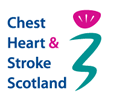Inhaled Corticosteroids - (ICS)
In asthma, the aim of ICS is to reduce symptoms, improve lung function, reduce the frequency of severe exacerbations (including hospital and intensive care admissions) and decrease the risk of mortality. ICS reduce the numbers of inflammatory cells in (asthmatic) airways. Through suppression of airway inflammation, ICS reduce airway hyper responsiveness and help to control asthma symptoms. In asthma, inflammation is primarily caused by eosinophils. Corticosteroids are effective in reducing eosinophilic inflammation.
For COPD - ICS effects are more uncertain and benefits unclear. Older people with other co-morbidities are likely to be more at risk of steroid related side effects. In stable COPD, neutrophils are the predominant cause of inflammation.
- Inhaled steroids are preferred for asthma and COPD because they act directly on the airways and have fewer side effects.
- Inhaled corticosteroids (ICS) are the most effective controllers of asthma and in some patients with airway inflammation in COPD.
- In COPD, ICS can be taken as a single inhaler in mild disease. They are used in combination inhalers with long-acting β2-agonists (LABA) for people with asthma.
- It may take several months for the airway hyper responsiveness to stabilise. Therefore steroids should be taken regularly for greatest benefit.
Drug names:
- Beclometasone (in Fostair, Qvar™).
- Budesonide (in Pulmicort™, Symbicort™).
- Fluticasone (in Relvar™).
- Fluticasone (in Seretide/Flixotide™).
- Ciclesonide (in Alvesco™).
- Mometasone (in Asmanex™).




